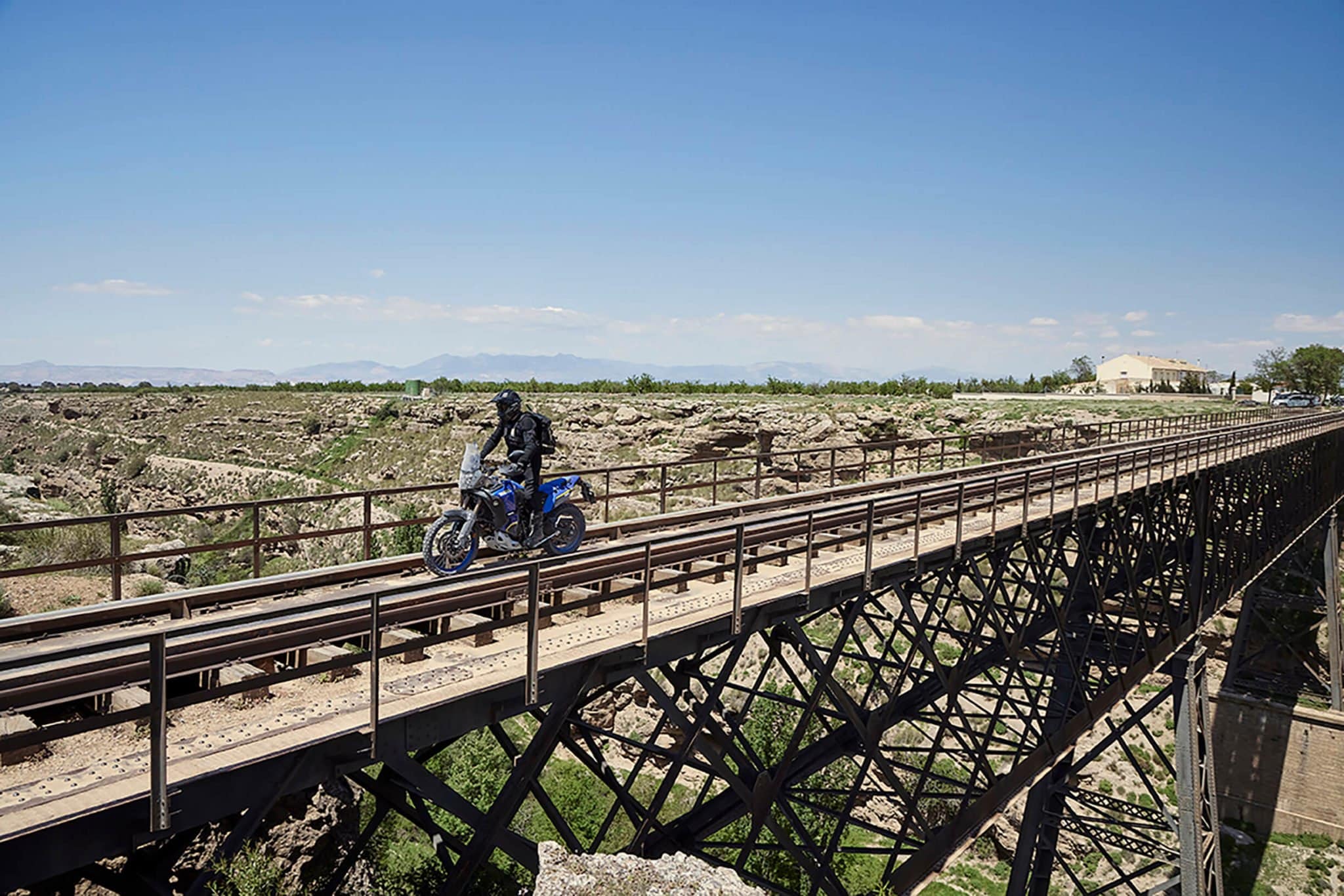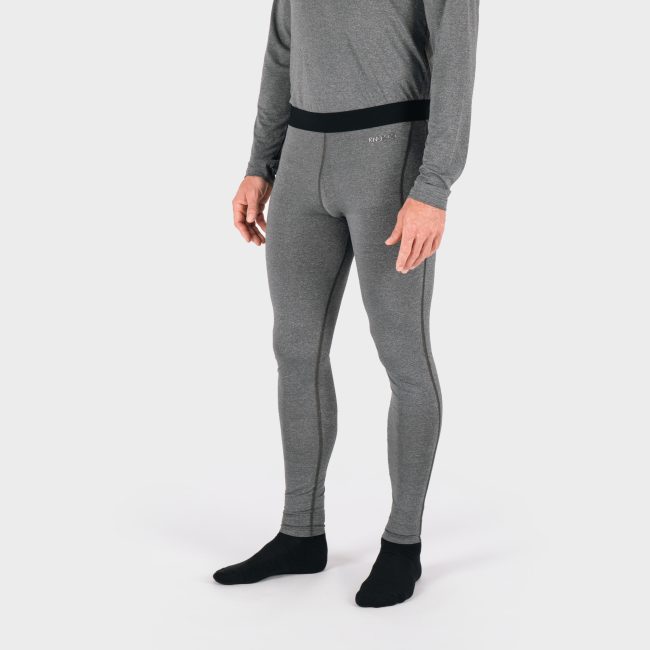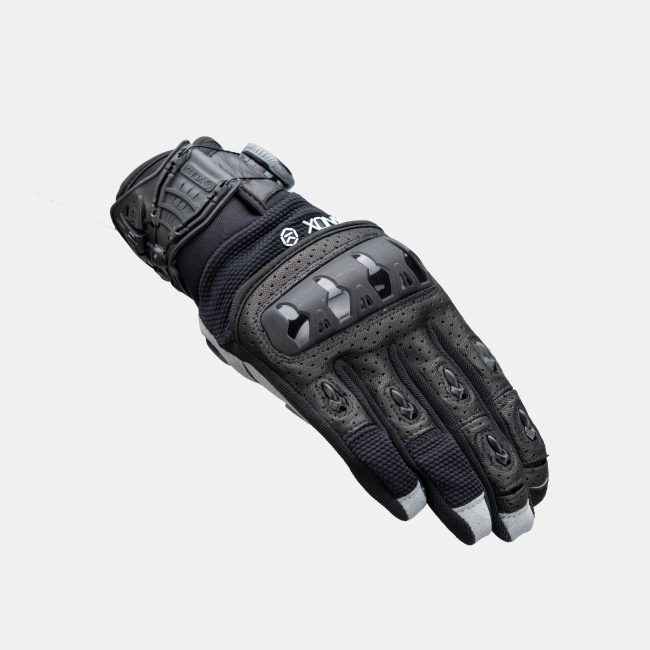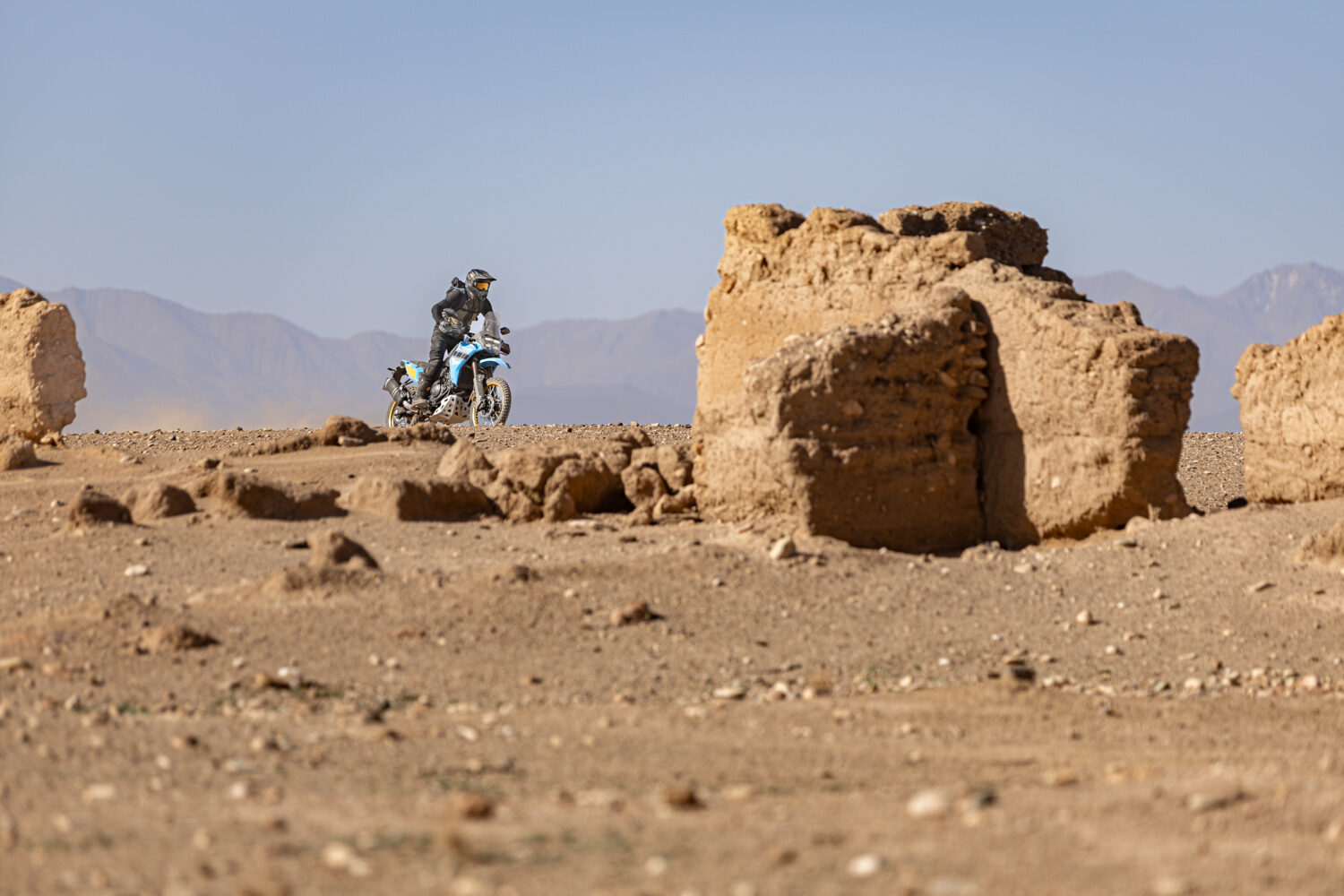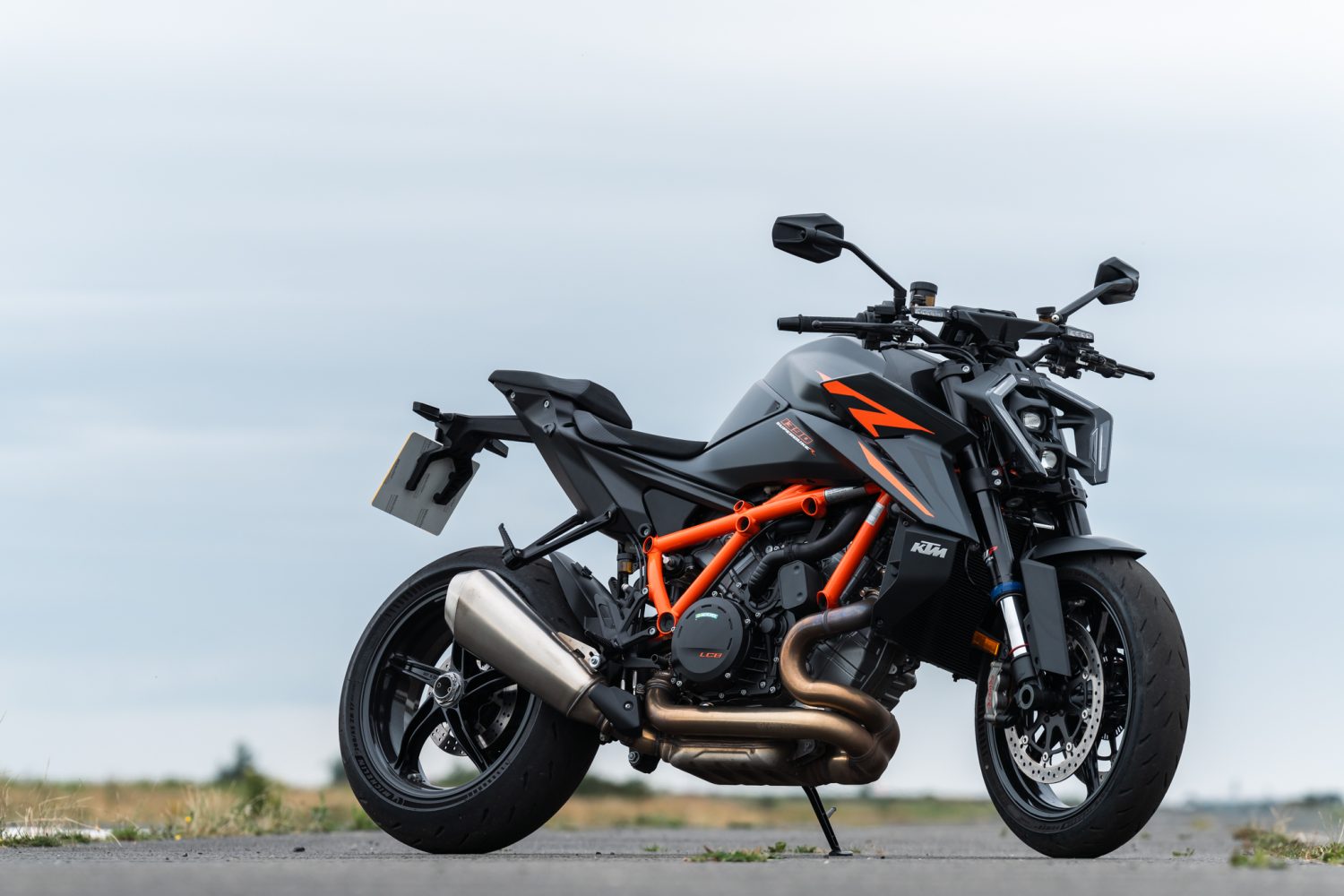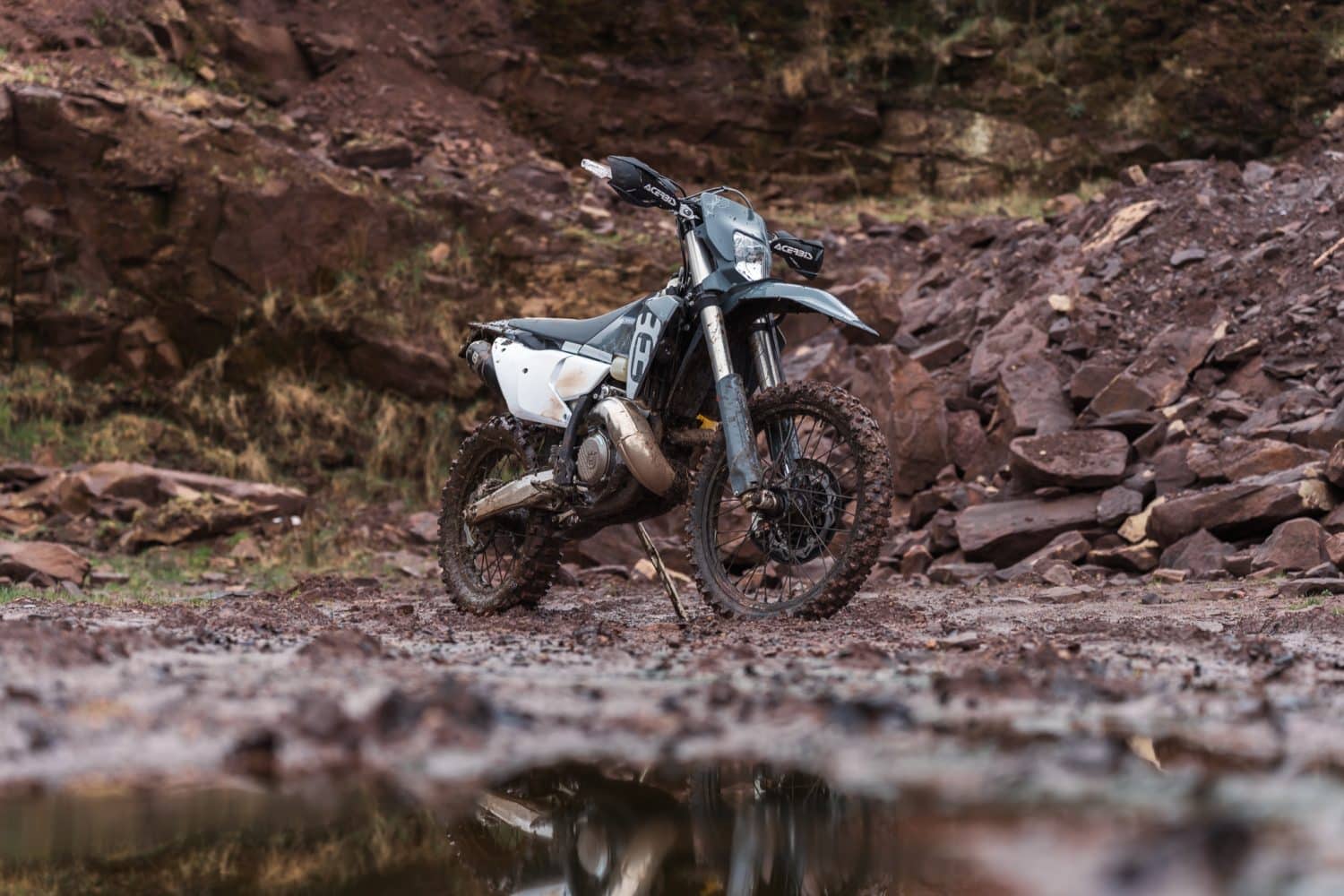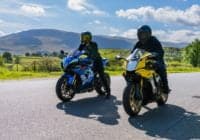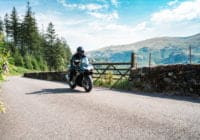2022 Yamaha Ténéré 700 World Raid
WRITTEN BY CHRIS MOSS. PICTURES BY YAMAHA.
Yamaha has a new dual-purpose adventure bike, the Yamaha Ténéré 700 World Raid. We went to ride it at its press launch in southern Spain on both on and off-road routes.
We then had the good fortune to get another one back in the UK, taking it for a quick 350-mile spin on more familiar roads.
As the trend for adventure bikes getting bigger, more powerful and complex marched on (as it still does), back in 2019, Yamaha chose to go down a different route with its Ténéré 700. With just 72bhp, and a simpler, relatively tech-light design, it was aimed at the adventurer who wanted to ride more off-road. It’s a niche segment of the class, but the bike still sold well. To further that off-road suitability even more, there’s a new version of the bike, the upgraded Ténéré 700 World Raid model.
Some of its key new features are a giveaway to its even greater off-road design consideration. First one is the 20mm longer travel suspension and the extra ground clearance that comes with it, with the next clear clue coming in the shape of its bigger twin 23-litre pannier style fuel tanks. Joining those are a flatter two-piece seat, rad guard and stronger bash plate, multi-mode 5” TfT dash, bigger off-road footrests, and an extra ABS braking option.
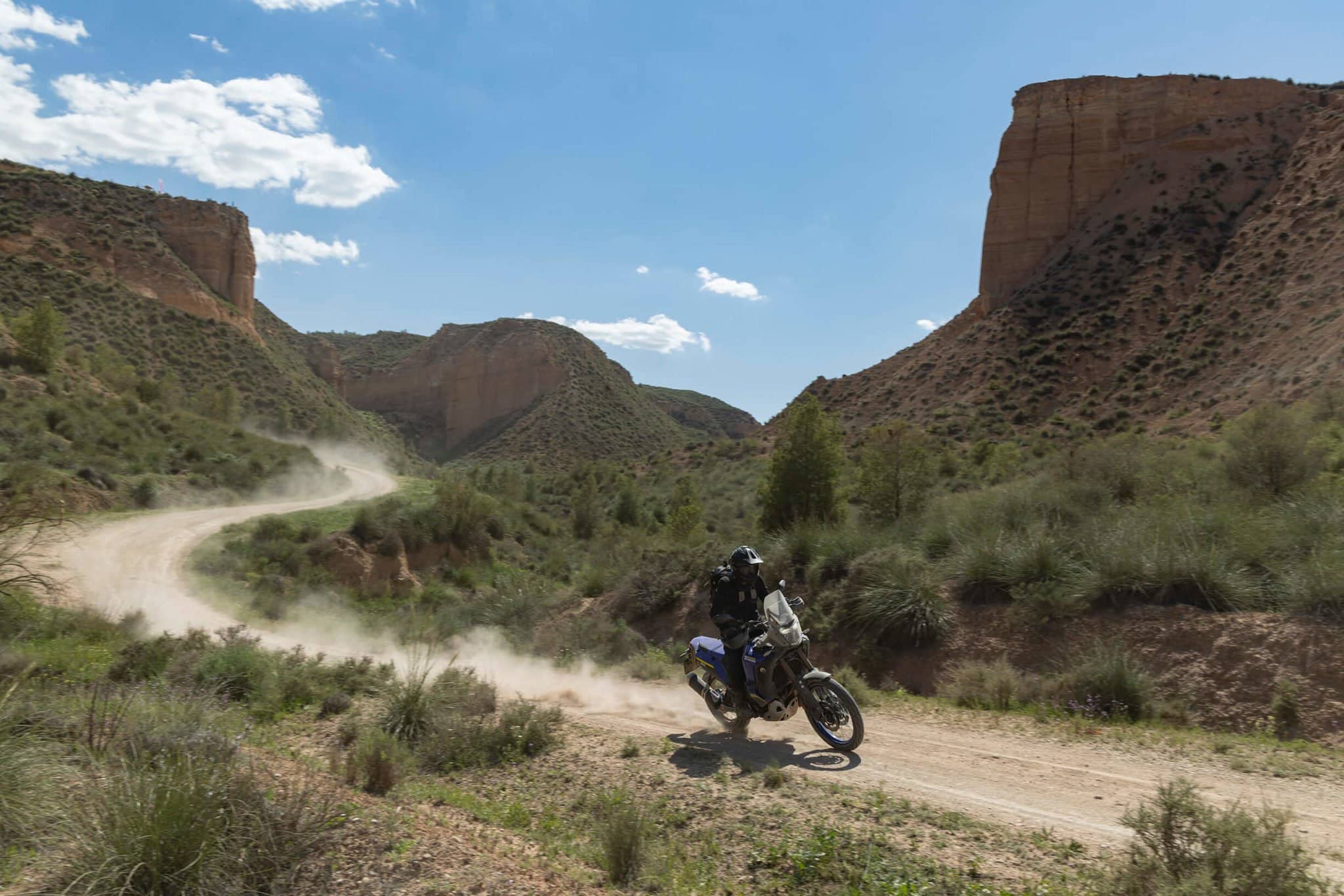
Heading for the Spanish hills
To give us the chance to assess just how well those changes help the new 700 suit the role it’s been built for, we spent the day riding on a 50/50 mix of road and off-road routes, winding through the beautiful mountainous Sierra Nevada region of southern Spain. It turned out to be a highly agreeable day, the Ténéré coping admirably well with the task of getting us round the 200-mile route. It really is a capable, yet very manageable and highly versatile dual-purpose adventure bike. It might not be perfect, but plenty of the bike’s numerous virtues had an influence in helping to despatch the memorable day so easily and enjoyably.
I absolutely love riding days like this one. With the weather forecast being as good as it was, the route promising to offer just the right mix of manageability and challenge, and the company of other riders likely to add to the reward, I swung my leg over the Ténéré with plenty of optimism.
Lifting a leg
Actually, that’s stretching things a little, as one of the key considerations I had approaching the bike was how I was going to get on the thing! With its seat height set at a lofty 890mm, there was no way I was just going to casually swing my 30” leg over the seat with ease. Luckily for me, I’ve had quite a bit of experience meeting the challenge of getting aboard taller bikes so I didn’t struggle too much in the end. Because I anticipated this detail whenever I was likely to need to place boot on terra-firma, I subsequently never had a problem with it once during the long day. Raised by 15mm over the standard Ténéré model it might be, but the slimmer width of the seat helps to compensate. You can move further forward on it too, as the front of the seat runs between the lower slung tanks. That’s just not possible on the current bike as the back of the fuel tank prevents such forward movement. It’s a good arrangement and the greater freedom to alter your position had appreciable front-end grip benefits later during the ride when we took to the dirt.
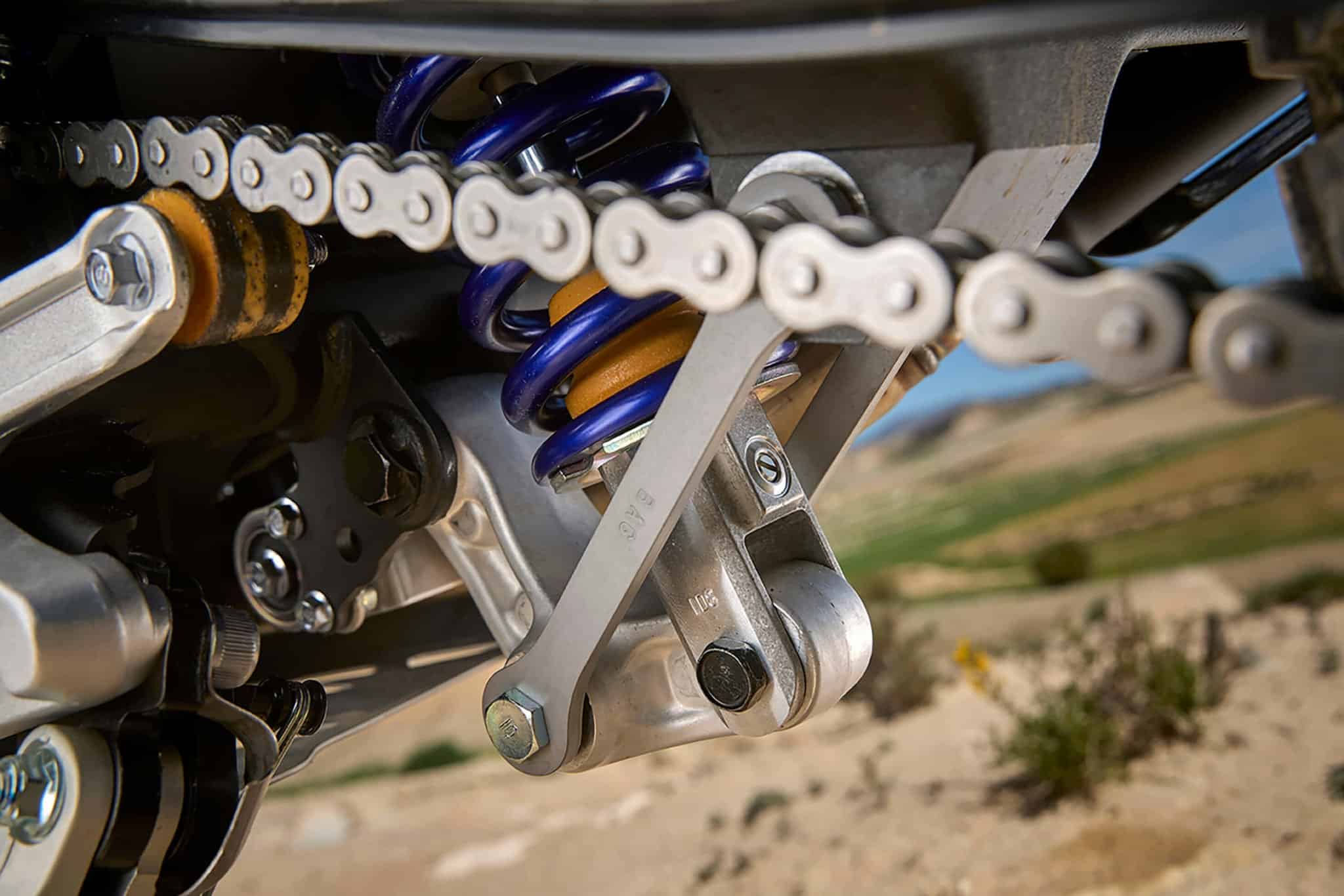
Now that’s a lot better
The standout feature that benefits the new 700 most of all, and evident right from the first few yards of riding over the cobbled hotel grounds, all the way to the end of the 200-mile day, is that upgraded suspension. It really does have a plusher, better controlled feel at all times, despatching road, and off-road imperfections well enough to lessen their effect on the bike’s trajectory and your contact points.
The ride to the first off-road section wasn’t exactly long enough to test the Yamaha’s abilities as a long-range tourer. But even so, the relaxed riding position and surprising level of shelter offered by the 15mm taller non-adjustable screen, adjacent deflectors, and width of the fuel tanks all bode well for those who like to knock out lots of miles in comfort. Whether the seat can offer a plush enough resting point to take full advantage of the huge 250-300mile fuel range the 700 now has, remains to be seen. But if it can, then reaching more distant locations quickly and easily should be well within the bike’s remit.
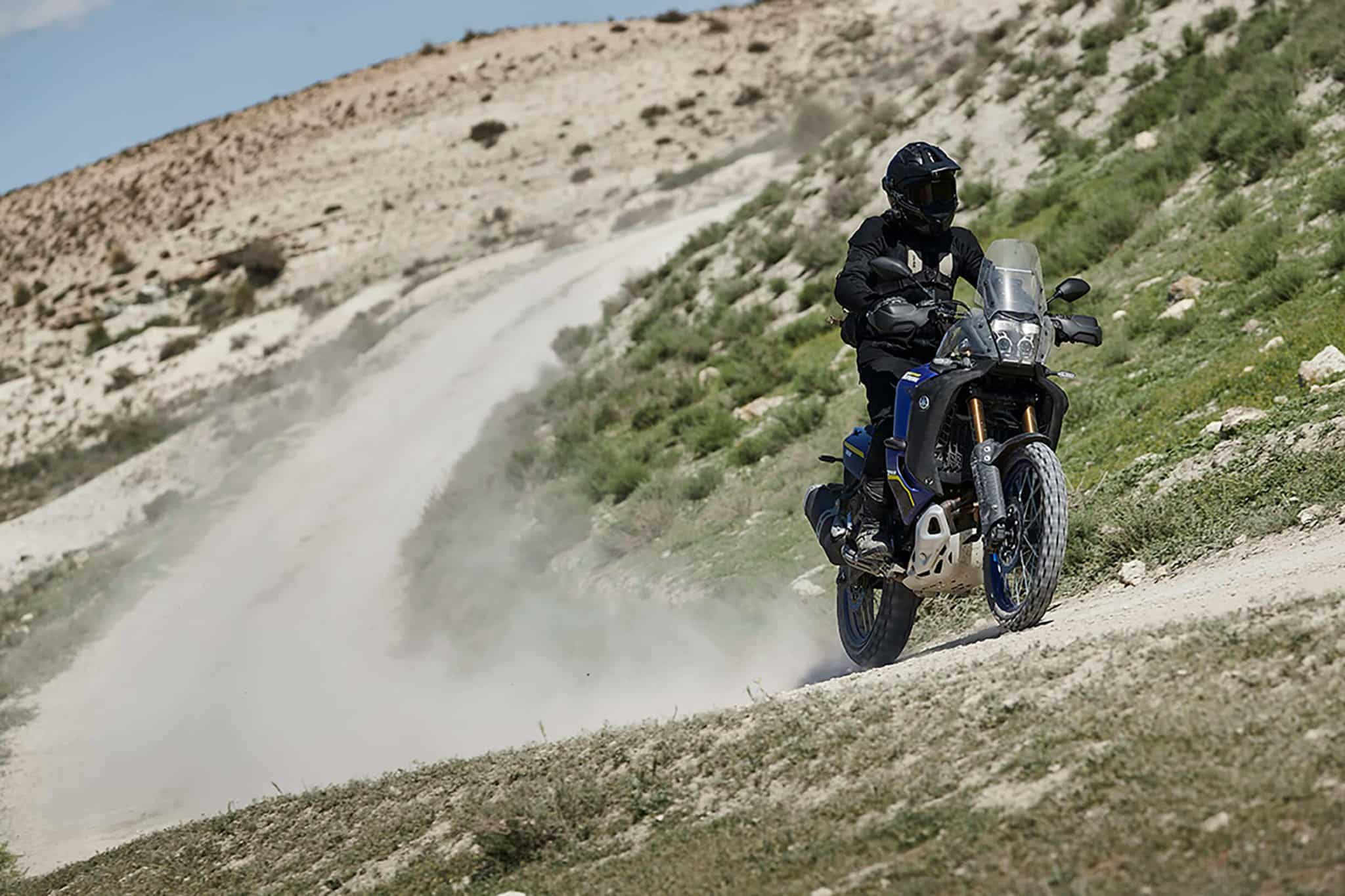
What a great engine
Powering the adventure bike in a laudable fashion is the usable, and very useful parallel twin engine. Delivering its drive in a friendly, flexible and easy to manage fashion, the motor is both proven and well-suited to its intended role. Some might think the maximum power output of ‘just’ 72bhp is a little modest. I’d say though it might well sound like it, it generates extra pace whenever you require keenly and obediently, providing enough but rarely too much. That 270-degree crossplane crankshaft, and its associated uneven firing order, that helps give the motor its eager throttle response, also a lovely off-beat exhaust note to go with it. Used to power several other bikes in the Yamaha range such as the MT-07 and R7, it underlines its versatility by suiting the adventure bike well.
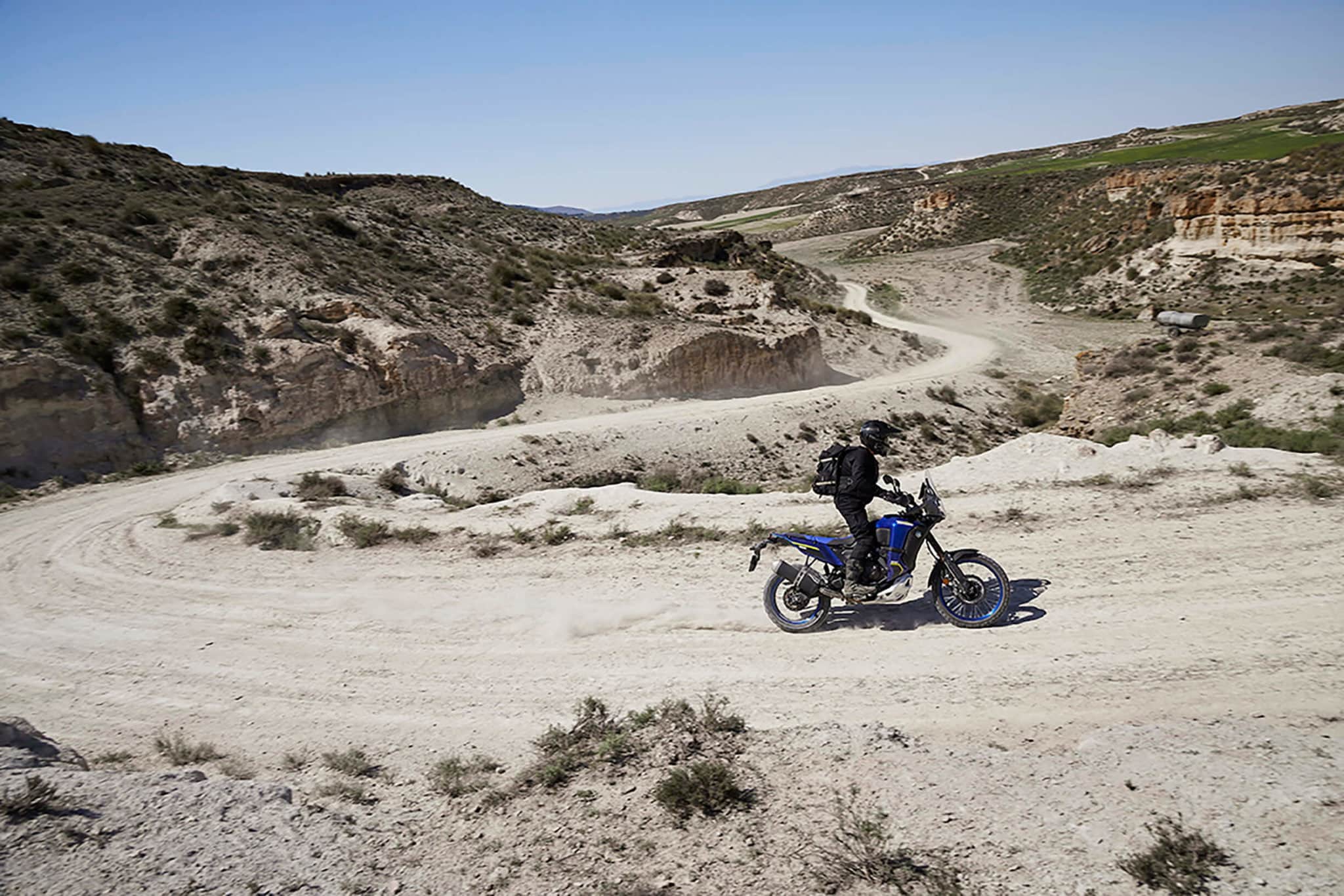
Does it cut the mustard off-road?
With a trustworthy chassis giving predictable steering, progressive braking, and that impressive suspension, when the time did come to leave the road behind I was pretty confident the T7 would continue being agreeable. I was certainly curious how well the bike would feel with its appreciably bigger and wider tank, but Yamaha’s clever designers have managed to negate the effect of the extra bulk and weight well. The twin tanks are mounted lower in the frame, with the fuel pump now positioned inside, and nearer the base of one of them. Centre of gravity is claimed to be roughly equal to the existing bike, and though the World Raid is a not inconsiderable 16 kilos heavier with full tanks than the current model, I’d only be prepared to comment on just how much that extra weight manifests itself if I got the chance to ride the two bikes back-to-back. Because you can move further forward to load the front end in corners over lower-grip corners, I’d wager the new version of the 700 would be likely to feel no less manageable. I couldn’t vouch for the effect of the new Ohlins steering damper as even on a light setting, I never triggered any instability. In saying that, I never have on the current model either.
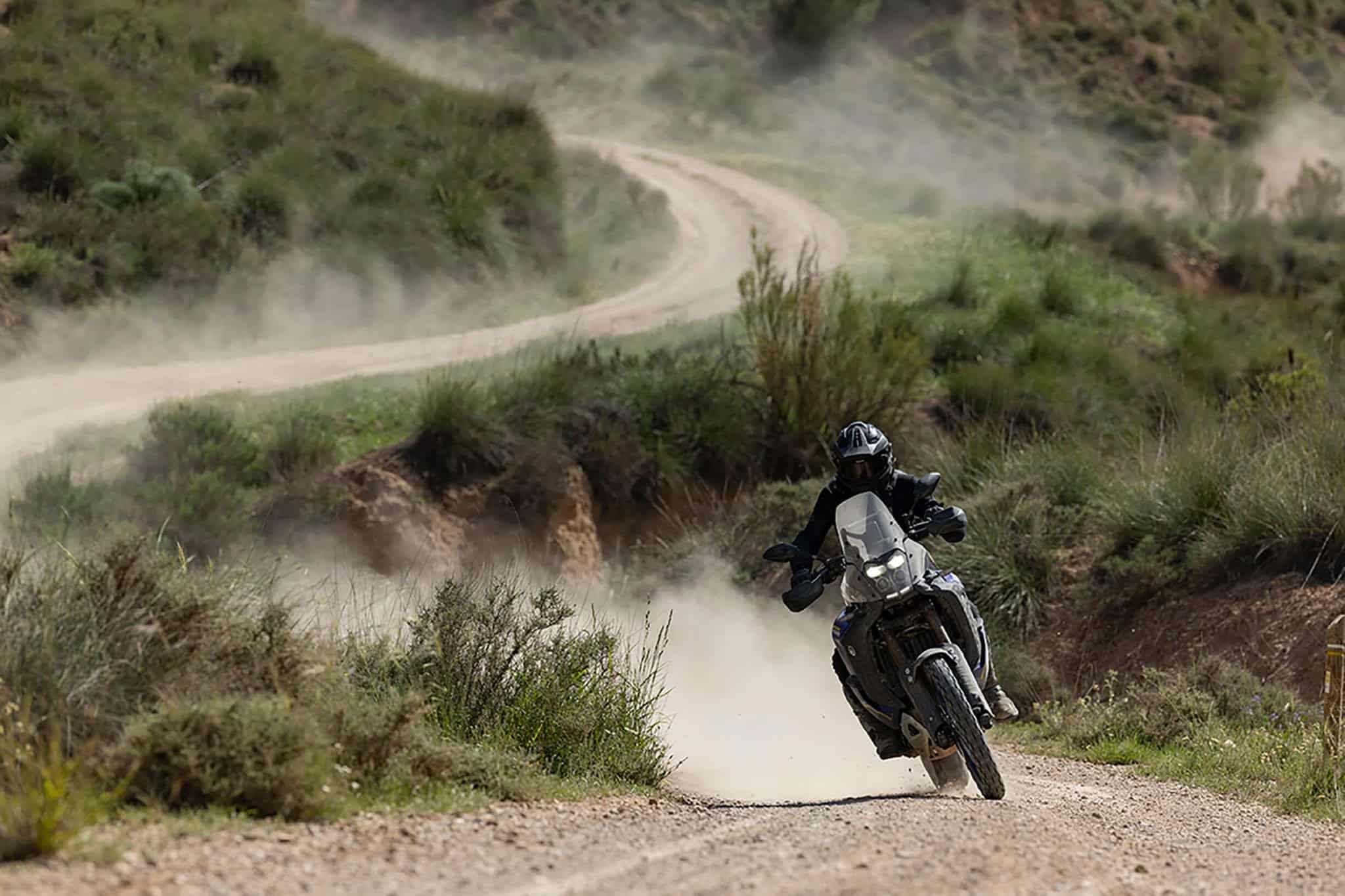
Carefully chosen route
There’s no doubt Yamaha had chosen the route to suit the strengths of the Ténéré and, more to the point, not have it become too much of a handful. Hard-packed, and very dry, it was pretty easy to navigate what has to be termed a big and weighty adventure bike along them. The off-road sections weren’t without their challenges mind you, and you needed to have your wits about you when tackling some of the steeper, roughly-surfaced, climbs and descents. It was the same story with some of the corners covered in loose shale and finer gravel. Despite the potential for it to go Pete Tong, as long as you rode with some margin, the Yamaha made pretty easy work of it all. Some may lament the lack of traction control, something Yamaha defends by saying it adds unnecessary cost and complexity. But I found the manners of the engine sufficiently friendly and predictable to control things well enough with the right wrist.
Making our way through some truly spectacular scenery, it really was a pleasure to ride the bike in this more remote region of Spain. And though civilisation wasn’t actually ever far away, it did feel like you were doing a Dakar stage at times. Anyone who knows me, is well aware of my liking for trips like this, and there’s no doubt this one was making me feel very happy indeed.
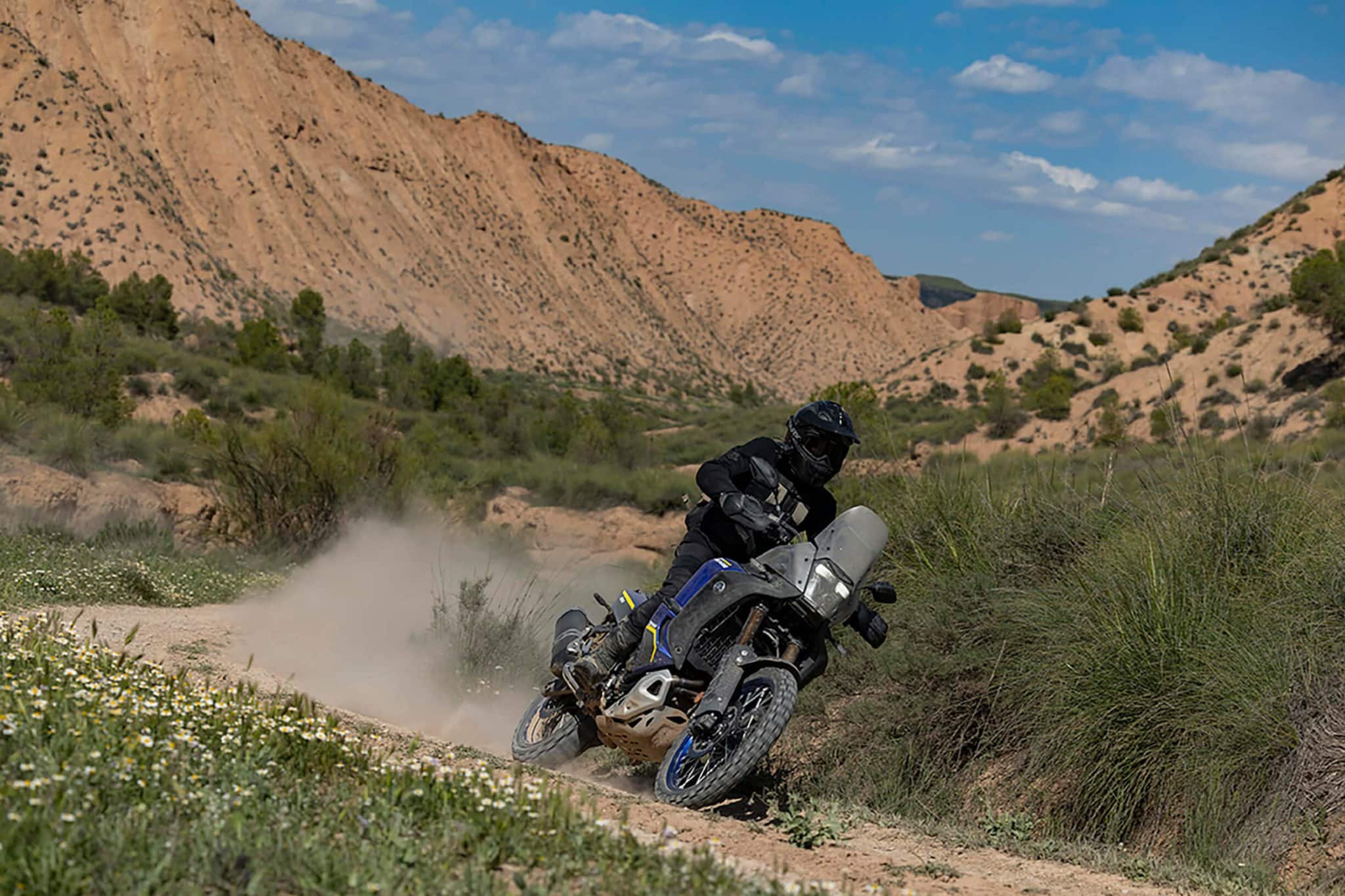
Lots of control and better comfort
Everything seemed to be on place to ensure full contentment, with the bike playing a big part in it all. It’s almost perfect for a trip like this one. As I expected the suspension is significantly superior to the current bikes with none of the bottoming out of the rear shock that machine can suffer from. Instead, there’s just an impressive action from both that, and the friction-reducing Kashima-coated forks, when you’re suddenly running over holes, gullies and rocks at speed. Support and control are also excellent under heavy braking and when getting on the power with greater commitment. Though the kit has full adjustment, including an easily-accessible remote preload adjuster on the shock, I was happy enough with its performance not to want to play with any of the settings at any time. The DNA of the current bike may well be very evident in the new one, but the suspension upgrade really does give it a superior feel and level of control.
The fine throttle control at very low speeds is just as good and useful as it’s always been. Off-road it’s a huge boon, and together with a light and progressive clutch action, it makes fine metering in some of the more challenging off-road sections a lot easier. Though I didn’t have call to do it on this bike over in Spain, I know from experience it’s also a bonus in very busy town traffic when progressing very slowly.
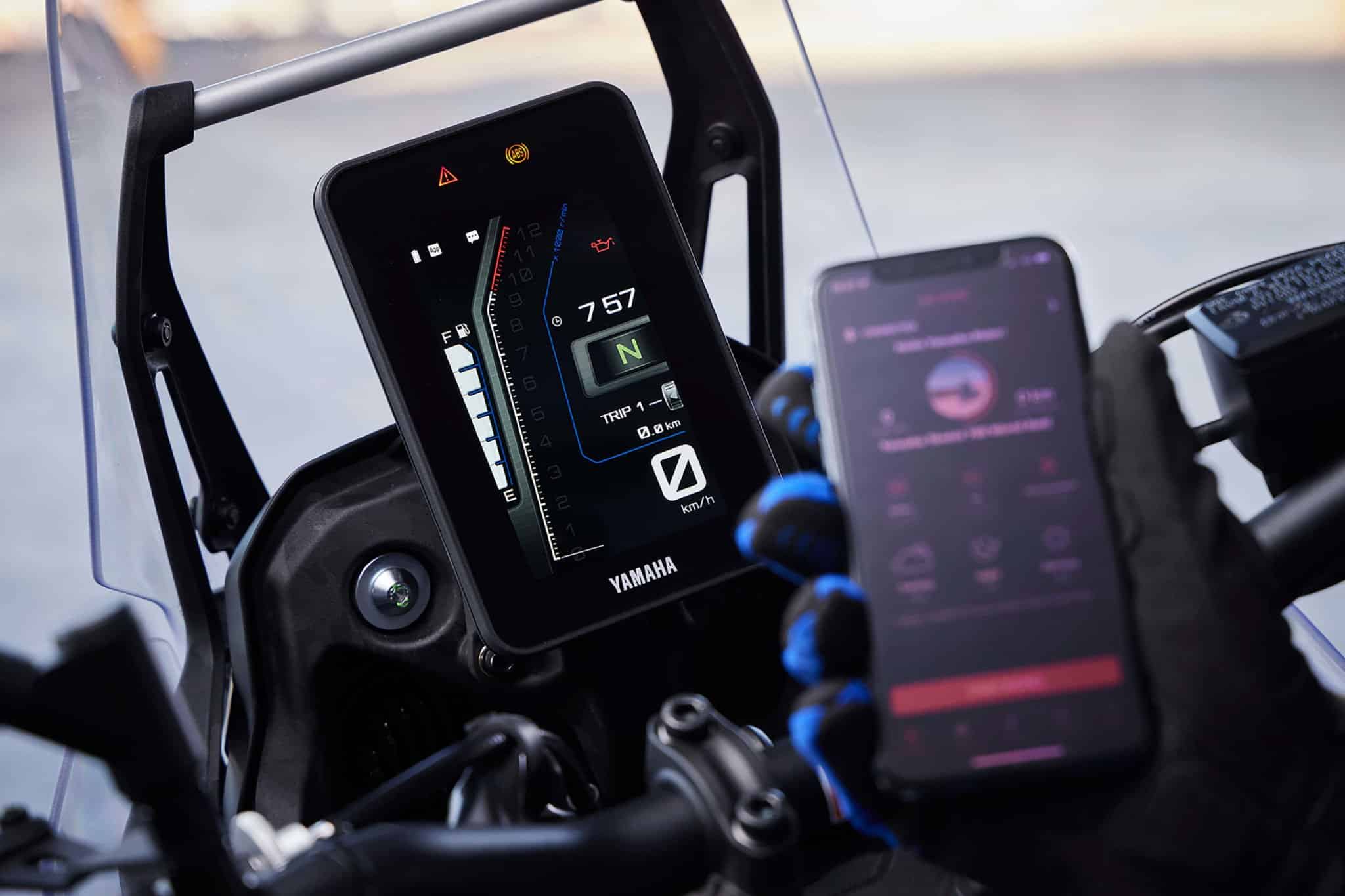
Useful electronics, not so easy to access
Another improvement over the old bike is the new 5” TfT dash and its numerous features including mobile connectivity, and an ICO computer for rally competition. There’s plenty of information on offer with the key stuff like the fuel gauge, clock, air temperature, trip meter, and selected ABS modes constantly displayed. Better still, you can select three different ways you want that displayed with the Explorer, Street, and Raid options altering the visual priority of the way all that info is shown. But, and it became a bigger but from time to time during the day, changing the settings via a thumbwheel on the right-hand bar switch wasn’t always as easy as it should have been. There’s a new setting on this bike which allows you to isolate the rear ABS only which I found especially useful and safer off-road thanks to the front still being active and effective. Yet changing to that setting when you got back on the road and vice-versa wasn’t as slick as it could have been. Worse still, you had to stop the bike to make the change to this, and other settings, which became irritating. To make matters more annoying, whenever you switched the bike off, or stopped the engine with the kill switch, the system reverted to the ABS being active on both wheels. I was told it was a factory policy to have things that way, who think it’s safer only to make changes only when the bike’s stationary. Partial compensation comes via a dash-mounted override button which activates the ABS on both wheels, negating a stop if you go from off-road road to off-road. It can’t help when your change is the other way around though. While I’m moaning, the rear subframe is still welded to the main frame and the exhaust end can hanger still welded to that. Given it’s a problem on the existing bike, it’s an oversight and something that’s more expensive and difficult to sort than if those parts were bolted on.
A hell of a day, and one I won’t forget
Luckily, when I view the bike as a whole, I couldn’t let those shortcomings affect my real admiration for the new Ténéré 700 World Raid. It had given me the sort of day that will linger long in the memory. In fact, I’d go so far to say the bike’s launch ride was one of the most enjoyable I’ve ever been on. And I’ve been on a hell of a lot. OK, the riding terrain was excellent and the weather superb, but I do suspect I’d still have a great time on it in some places like Wales or the Peak District. For sure if I went there, I’d have to choose appropriate routes to avoid it becoming too much of a handful. In deep mud or over very technical sections, there’s no doubt – like any other adventure bike – the Yamaha could be a lot harder to manage.
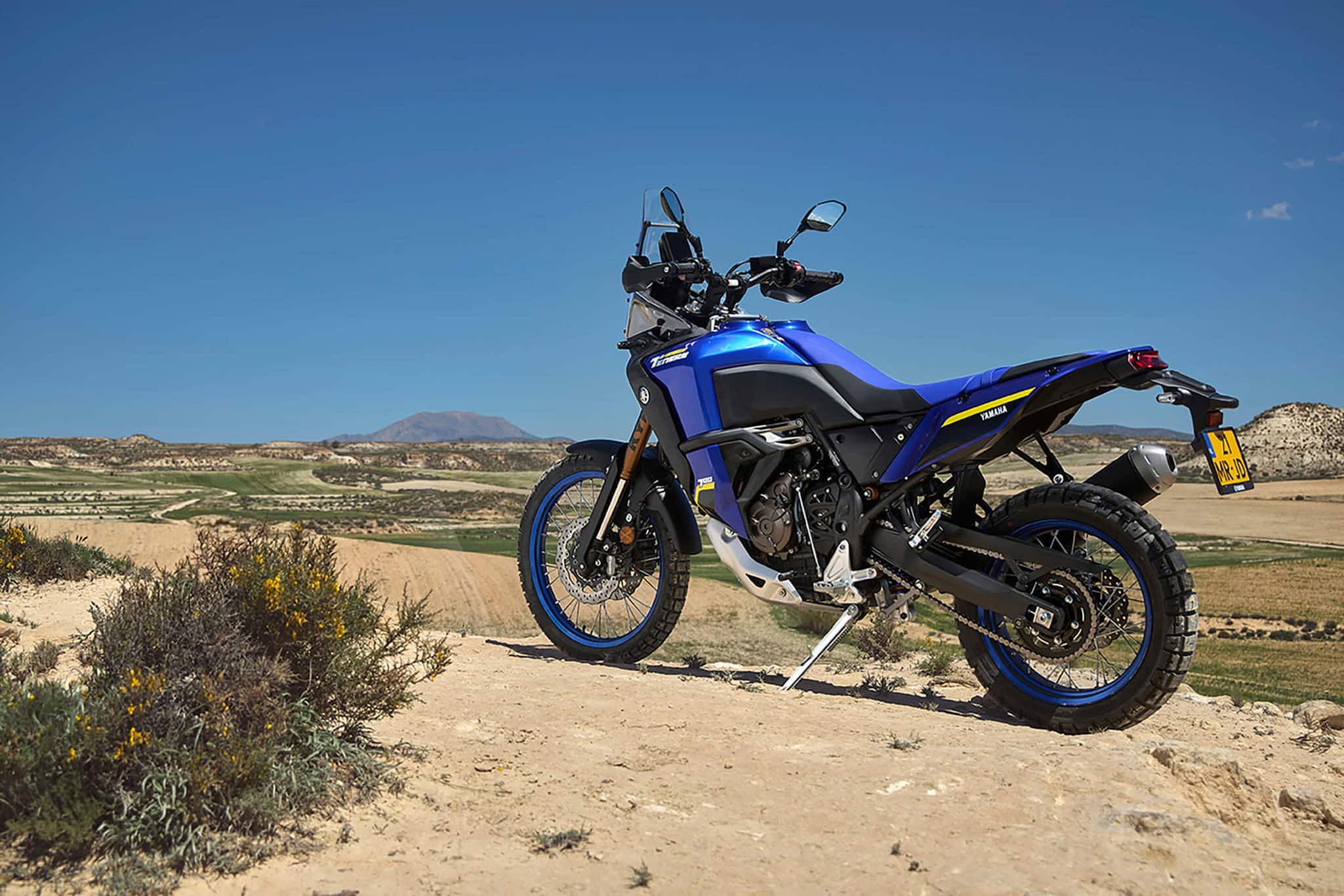
Questions, questions
Good as it is though, you have to ask the question, is the World Raid worth paying the extra for? Comparing it to the standard £9,900 Ténéré, the additional £1900 you need to spend is a fair old chunk. However, I do think the improved features the new 700 has are significant, and they do justify the higher price tag. If you do mix your road and off-road riding a lot, then you’ll appreciate the new suspension every mile you travel over rougher terrain. It really is a lot better, and as any off-road fan knows, quality suspension allows much better bike control and is sometimes the difference between staying onboard or not. The extra ground clearance the taller bike has, allied to the protection offered by the stronger sump guard will be appreciated in the more hostile off-road environment too.
The other new features can justify the higher price with the additional electronics included in the new TfT dash, extra ABS mode, steering damper, and bigger tanks, costing Yamaha more to include.
Now whether you want or need the more expensive World Raid model is another matter for debate. If you only ride on the road, then perhaps you won’t appreciate the new bike’s features. But every sort of rider will probably appreciate the massive fuel range, and almost certainly the extra wind protection offered by the taller screen, deflectors and tank itself. The new 5” TfT dash is prettier, and carries more information and options to change the way its displayed is a nice touch. Being as compact as it is will mean it’s less likely to get damaged in an off-road spill.
Are you big enough?
Ultimately though, I think one of the most influential factors that will determine how well-suited you’ll be to the Yamaha is its seat height. If like me, you’re not blessed with the greatest leg length, you’re going to have to take care when you come to a stop. However, with enough care and commitment you’ll be fine. I’m certainly glad I managed to get aboard this fine machine. I had a great time on it and really can’t wait to have another go. Hopefully it’ll be for far longer than a day!
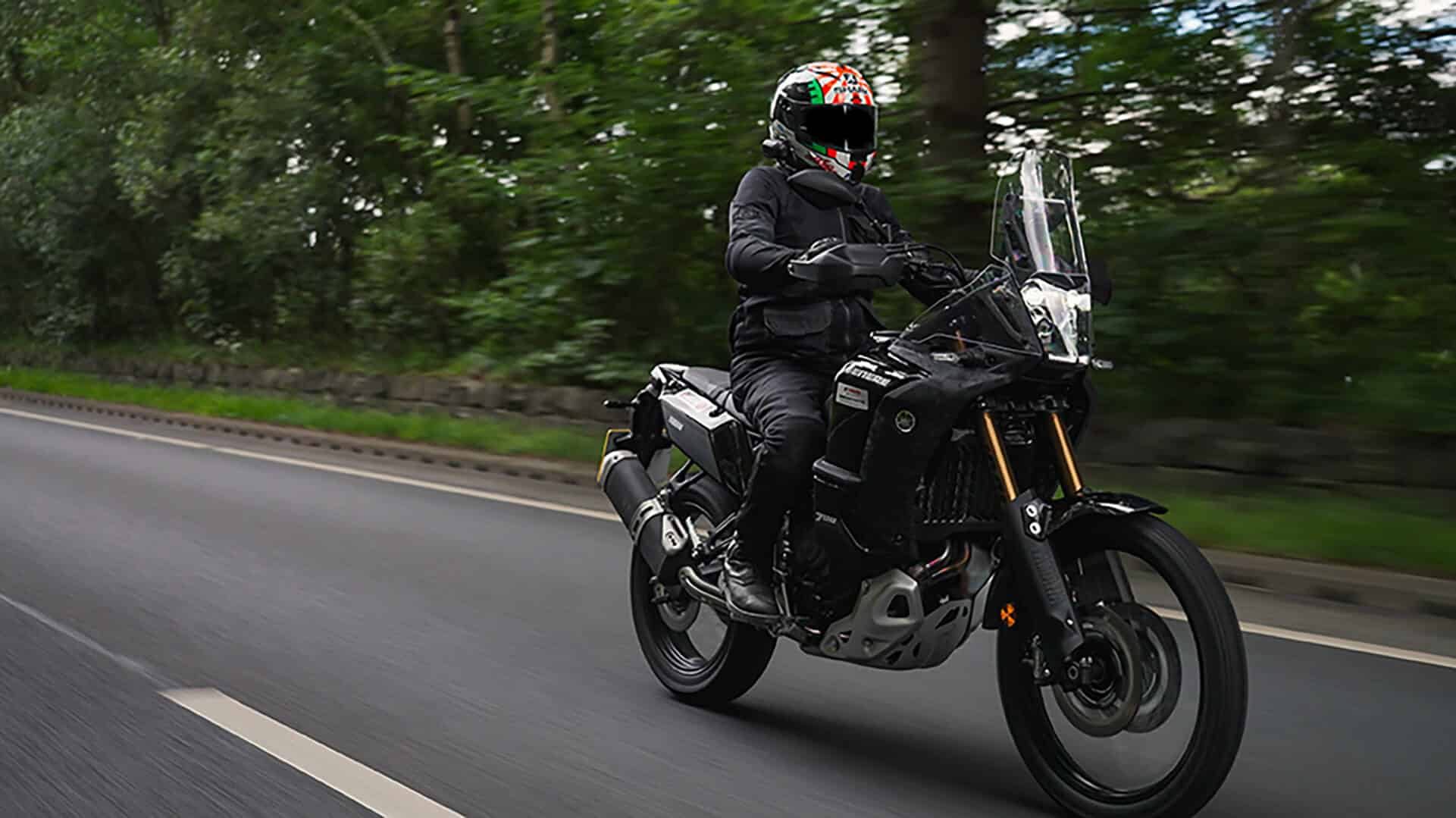
Riding one back home in the UK
Hardly an exhaustive test, a last-minute chance to try a new Ténéré 700 World Raid back in the UK after the Spanish press launch, was too good to turn down. Only around 350-miles in length the day’s ride nevertheless did show me a side of the bike I wasn’t able to examine in Spain.
Picking it up from new Yamaha dealer Hunts Motorcycles in Manchester (huntsmotorcycles.co.uk, 0161 432 1303), I faced the same problem of getting aboard the tall adventure bike as I had done in Spain. To be fair to it though, just as was the case on the launch, after I’d managed it once, it was never a problem again in the time I had it.
Nipping through the busy streets of the famous northern city showed the Yamaha in a good light. That tall seat helps give you a very good view of the road and traffic conditions ahead, and with the excellent suspension making light work of any knackered roads, friendly brakes helping to cope with other hazards, the Ténéré gave me the impression it would make a good commuter.
Out on the M6, the wind protection was an impressive feature, and better still, knowing I had at least 300 miles worth of fuel once I’d topped up put me right at ease. For me, it’s one of the best features of the bike.
Getting away from the tedium and monotony of the three-laned routes was good news, as was the chance to navigate the corners of the A66 and very pretty twisting routes around the Lake District. Again the 700 coped well, though I would say on occasion I was reminded of the more modest power level of the engine. It’s very usable generally with its keen throttle response, flexibility and very agreeable exhaust note. But when you really want to get past traffic quickly and decisively, you sometimes need to drop a gear or two and spin the twin harder. I wouldn’t label it as a problem as such, but it (naturally) can’t generate extra pace like some of its bigger, and more powerful competition.
I do think it’s a bike you need to ride off-road to appreciate more. It performs very well over that sort of terrain (as long as it’s not too demanding), and your opinion of it will rise. If though, like I did on this ride, you only ride it on the road, though the Tenere is what you’d have to consider as very likeable and highly capable, you won’t get the chance to discover all of its virtues. It might well be a very versatile machine, as my long day’s ride over all types of roads proves. But it’s only when you mix your road journeys with some miles away from the Tarmac, just as I did in Spain, that you’ll see it at its very best.
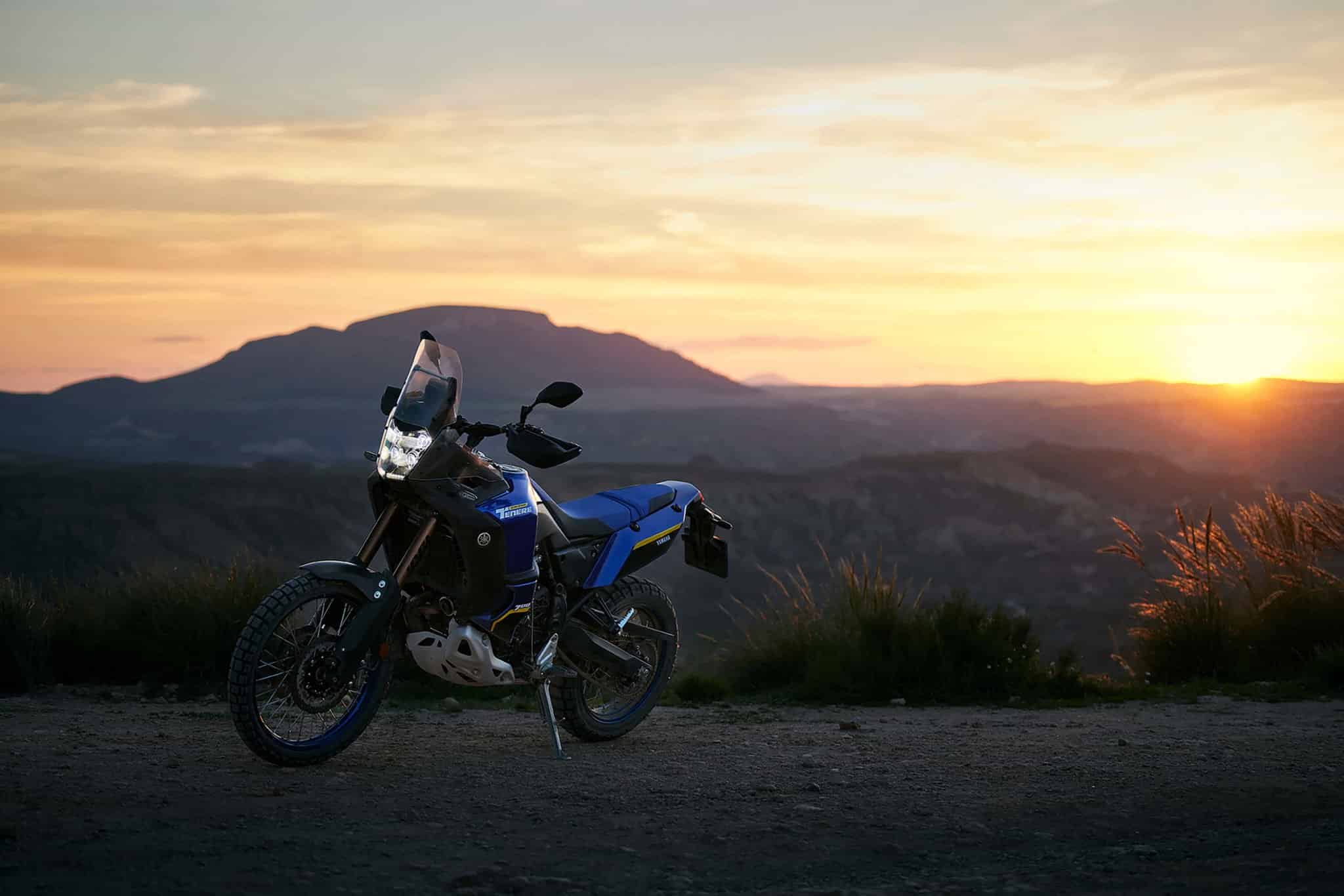
ANNOTATIONS
ENGINE
Also fitted to other models in the Yamaha range, like the XSR700, MT-07, and R7, the 689cc parallel twin engine underlines its versatility by being well-suited to the new Ténéré. Yamaha has chosen not to get involved in the horsepower race, thinking the 72bhp maximum, and flexibility helped by the 270° crankshaft and its uneven firing order, provides a better option.
ELECTRONICS
In a bid to make the bike cheaper and simpler, the 700 is not fitted with either an IMU to give lean-influenced electronic regulation, not does it have any traction control. The ABS system how has a third, front only mode to make it more suited to off-road riding, when locking the rear wheel is preferable at times. Just a pity you need to stop the bike to alter the settings. A dashboard-mounted button does like you select full ABS on the move though.
SUSPENSION
Ultimately a limitation on the current bike when you’re riding it harder, especially off-road, the new 20mm longer travel KYB suspension offers appreciably superior performance. The more stiffly sprung 43mm fully-adjustable inverted forks feature Kashima coating to reduce stiction. The rising-rate rear shock also features a heavier spring and full adjustment, including an east to reach preload adjuster. Better both on and off-road, the suspension is both more comfortable and controlled.
FUEL TANKS
Helping to make the adventure bike even more versatile, the 23-litre twin tanks offer a massive 250-300-mile fuel range. Their width offers a wind break for the legs, to aid comfort and the ability to help travel non-stop between fuel stops. Twin filler caps slow down the full filling process, though they are linked so the fuel load will be balanced in time. Costs around £40 to brim though!
SUBFRAME
Still welded onto the main frame, seat subframe damage could be an expensive crash repair. A bolt on arrangement would be better, as it would be for the exhaust end-can hanger. Yamaha claims it can be bent back as easily as it’s pushed following a fall.
ACCESSORIES
The bike will be available in dealers this month in both blue or black options. A range of accessories including luggage, crash protection, fog lights and centre stands will also be on sale. Three accessory packs – Explorer (alloy panniers, centre stand, heavy-duty sump guard, narrow screen and extender), Adventure (panel guard, front guard, sort panniers, LED fog lights, side stand extender), and Enduro Packs (higher front mudguard, radiator and chain guards, side grip pads, stronger sump guard, chain guard), can also be purchased to make your new Ténéré 700 World Raid even more versatile and capable.
RALLY EDITION
Another Ténéré 700 in the range, the Rally Edition, is also a higher spec version of the standard bike. Finished in rally racing colours, the bike is fitted with alternative parts including a flatter rally seat, Akrapovic end can, heavy-duty sump guard, radiator protector, and off-road handgrips. Costing £11,200, it doesn’t feature the higher quality suspension of the World Raid model.
Specification
2022 Yamaha Ténéré 700 World Raid
Price: £11,800
Engine – 689cc, parallel twin, l/c, 8-valve, dohc
Bore & Stroke – 80 x 68.6mm
Compression – 11.5:1
Power – 72bhp (54Kw) @ 9000rpm
Torque – 68Nm (50lb/ft) @ 6500rpm
Transmission – 6-speed, chain
Chassis
Frame – Steel-tubed double cradle, cast alloy swingarm
Front suspension – 43mm fully adjustable KYB inverted forks
Rear suspension – fully adjustable KYB rising-rate shock
Front brake – Twin 282mm discs, twin-piston ABS calipers
Rear brake – Single 245mm disc, single-piston ABS caliper
Front tyre – Pirelli Scorpion Rally STR, 90/90-21
Rear tyre – Pirelli Scorpion Rally STR, 150/70-18
Rake – 27°
Trail – 105mm
Wheelbase – 1595mm
Seat height – 890mm
Wet weight – 220kgs
Service intervals – 6,000 miles or annually
Warranty – 24months, unlimited mileage
Contact – www.yamaha-motor.eu
TENERE IMAGE GALLERY
Knox products worn on test!
-
Select options This product has multiple variants. The options may be chosen on the product page
Max Dual Active Base Layer
£44.99 -
OUT OF STOCKSelect options This product has multiple variants. The options may be chosen on the product page
Orsa OR3 Textile MK3 Gloves
£99.99
Written by Chris Moss



